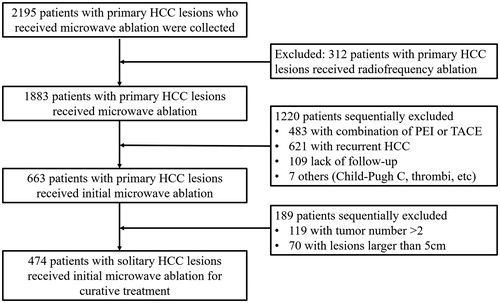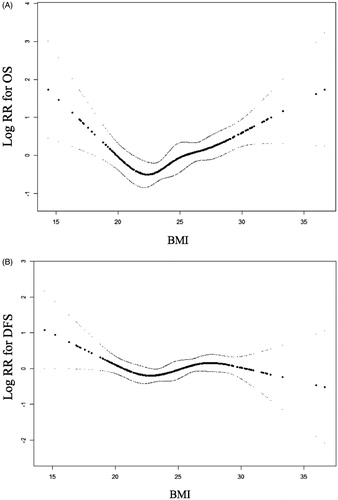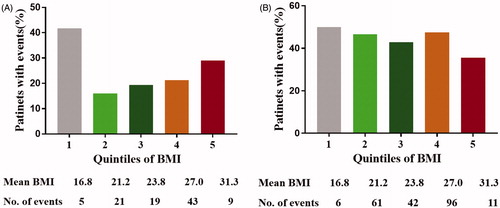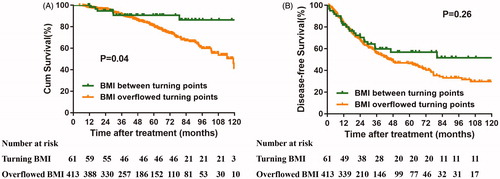Figures & data
Figure 1. Flow diagram of patient selection in this study. HCC: hepatocellular carcinoma; PEI: percutaneous ethanol injection; TACE: transcatheter arterial chemoembolization.

Table 1. Characteristics of included patients and univariate analysis of survival outcomes.
Table 2. Adjusted effects of BMI on survival results in multiple models.
Figure 3. The relationship between BMI levels and survival outcomes. (A) BMI and overall survival*; (B) BMI and disease-free survival#. *: adjusted for age, size, Charlson Score. #: adjusted for age, gender, size, Charlson Score, ALT, tumor location, NLR, platelet, MELD, Child-pugh, ALBI, cirrhosis.

Table 3. Threshold effect analysis of BMI on overall survival by piece-wise linear regression.


